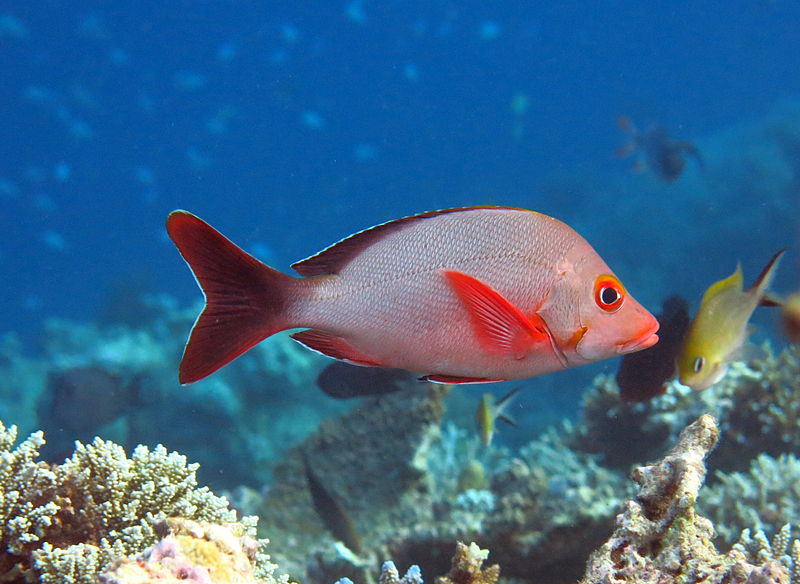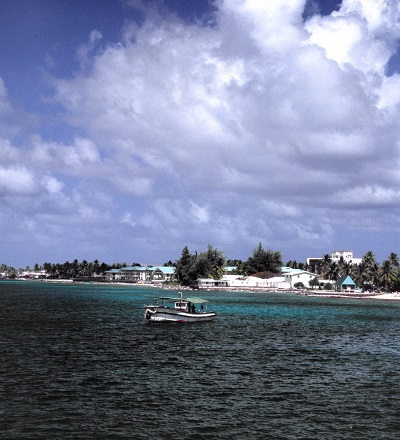
Humpback red snapper. Photo by Julien Bidet for MDC Seamarc, Wikimedia Commons.
Warming waters, king tides and storm surges are not the only things affecting the availability of seafood in the Marshall Islands. Incomplete reporting of fisheries catches and, therefore, of how much is being taken out of the oceans also is.
A new study by the Sea Around Us – Indian Ocean at the University of Western Australia and the Sea Around Us at the University of British Columbia found that total marine fisheries catches were 27% higher over the last 60 years than the data officially reported by the Food and Agriculture Organization of the United Nations on behalf of the Marshall Islands.
“Poor reporting was particularly troubling when looking at the subsistence sector, which includes fish and invertebrates that people catch for their own and their family’s consumption, and the artisanal sector, which includes catches that are taken by small-scale operators for commercial sale,” said Gabriel Vianna, lead author of the study and a postdoctoral research fellow with the Sea Around Us – Indian Ocean.
More than 65 per cent of fish catches within the small-scale sectors were taken by Marshallese people for their own consumption, at an average of 3,200 tonnes per year. However, only 8 per cent of those catches were apparently reported.

The Marshall Islands – Majuro. Photo by Stefan Lins, Flickr.
“Each person consumes about 82 kilos of fish per year. This is disproportionally high compared to other coastal countries but not that unusual for coral-atoll type Pacific island communities,” said Dirk Zeller, senior author of the study and director of the Sea Around Us – Indian Ocean. “The importance of the subsistence and artisanal sectors when it comes to food security should imply that authorities keep a close eye on their development and changes over time. Since this does not seem to be the case, it may be that management decisions are being taken blindly.”
The fact that artisanal and subsistence catches are generally landed at a large number of spatially dispersed locations, coupled with the widespread believe that such catches are not substantial in volume and economic importance, tend to be the reasons why they are not properly accounted for.
“But they are significant,” said Brittany Derrick, co-author of the study and a research assistant with the Sea Around Us. “And when we estimated how much effort both artisanal and subsistence fishers are putting in to catch such amounts of fish, we noticed that in more recent times, many of them switched to motorized vessels and are spending more hours at sea but they are catching less and less. This may suggest that they are overexploiting near-shore fish populations, something authorities may not be sufficiently aware of.”
In the researchers’ view, monitoring and careful estimation of country-wide, comprehensive catch and fishing effort data for each fishing sector in the Marshall Islands are crucial to really notice and understand how fish stocks have changed and are changing.
“Such information can lead to more effective and careful management of coastal fisheries and, consequently, to the protection of habitats to enhance the resilience of fish stocks. These actions, in turn, may partially alleviate or delay the detrimental impacts of climate change on small-scale fisheries in the island-country,” Zeller said.
The paper “Long-term fishing catch and effort trends in the Republic of the Marshall Islands, with emphasis on the small-scale sectors” was published today in Frontiers in Marine Science DOI: 10.3389/fmars.2019.00828.


